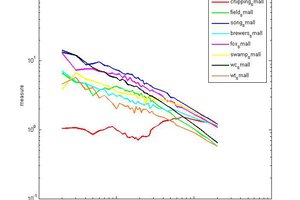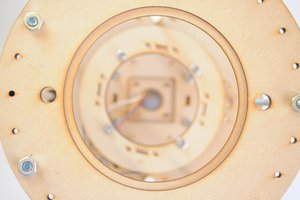I am working on Pomelo, a complete gamma spectroscopy module that includes CsI(Tl) scintillator, silicon photomultiplier, and all analog and digital electronics to produce a gamma spectrum. One of the experimental features currently under development is coincidence triggering – using two Pomelo modules and only recording data when both of them detect a signal at the same time. To test this I measured Compton scattering, which is an incoming high energy photon “bouncing” off of an electron. The photon loses some of its energy in the “collision” and shoots off to a side, while the electron gains some energy and shoots off in a different direction.
Compton scattering
Compton scattering is described in the following image and the energy of the outgoing photon is a function of the incoming photon energy and the scattering angle. The constants are the electron mass and the speed of light.

Compton scattering diagram and formula for the outgoing gamma photon. Gracefully stolen from Wikipedia
Experimental setup

Experimental setup for Compton scattering
In order to measure Compton scattering events I used a ~500 kBq Cs-137 source placed behind a lead brick with a hole in it. The 662 keV gamma rays exit the hole and encounter the first detector. Some of them suffer Compton scattering at the correct angle to reach the second detector and get absorbed there. Since the probability of all of these things to happen is very low, I need to have a selection mechanism that favours this type of event instead of all the other hits in the detectors. Coincidence triggering does this by sharing each detector’s trigger with the other one, like so:

Wiring and logic of the coincidence triggering mechanism
This isn’t perfect, as there isn’t any acknowledgement being sent back, but it still helps a lot in filtering out unwanted events.
Measurements
Here are the experiment diagram and results for 90 degree Compton scattering:

90 degree Compton scattering spectra, diagram, and expected theoretical results
And here is the same for 45 degree Compton scattering:

45 degree Compton scattering spectra, diagram, and expected theoretical results
It’s not perfect, as there are ~30 keV missing from adding the peaks up and the peaks are quite broad. But the setup geometry is not perfect either, as suggested by the experiment diagrams – the source isn’t point-like, the collimation isn’t very good as the hole is quite large, and detectors aren’t point-like either. Even if I manage to filter out just Compton scattering events, there are several angles that are accepted and their results overlap.
Electron spectrum vs photon spectrum
From the different spectra for the two detectors you can figure out which is the detector where the scattering occurred, and which is the one that caught the scattered photon. The scattered photon itself can suffer Compton scattering in the 2nd detector, so it has a characteristic gamma spectrum, with a photopeak and its own Compton spectrum.
The electron that the incoming 662 keV photon scatters off of, however, is a charged particle that deposits it energy completely in the scintillator, so it produces a single peak.
Conclusion
I had a lot of fun making this measurement, and it came out much better than I expected, detecting Compton scattered events that agree well enough with the theoretical results. I want to improve on the coincidence measurements, as it would be cool to be able to use two Pomelo modules to also detect cosmic muons.
 mihai.cuciuc
mihai.cuciuc
 Bruce Land
Bruce Land
 RichardCollins
RichardCollins
 peter jansen
peter jansen
 glgorman
glgorman